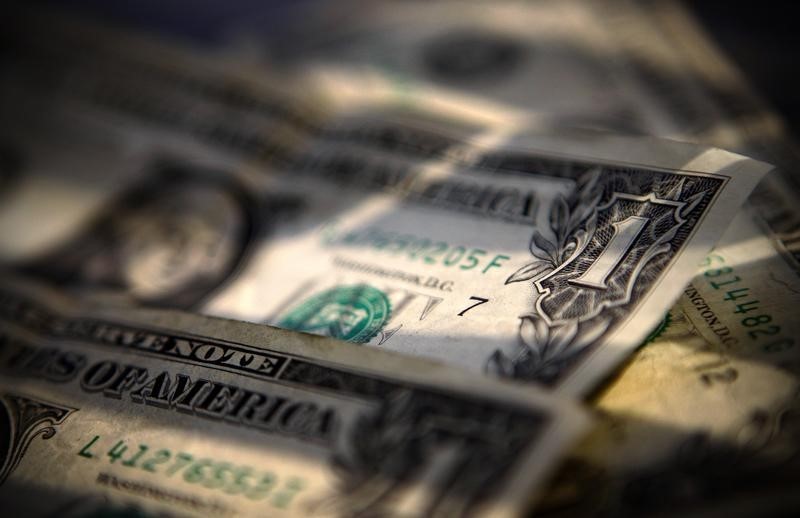By Gina Lee
Investing.com – The dollar was down on Thursday morning in Asia, after falling overnight against the pound and the euro in particular. U.S. yields hit pause on their recent rally, offering some relief to the Japanese yen.
The U.S. Dollar Index that tracks the greenback against a basket of other currencies edged down 0.18% to 99.733 by 11:58 AM ET (3:58 AM GMT).
The USD/JPY pair was down 0.35% to 125.22.
The AUD/USD pair was up 0.15% to 0.7460, with Australian employment data showing that the employment change was 17,900, the full employment change was 20,500, and the unemployment rate was 4% in March 2022.
The NZD/USD pair gained 0.40% to 0.6822.
The USD/CNY pair inched down 0.03% to 6.3668 while the GBP/USD pair edged up 0.15% to 1.3435.
Investors now await the European Central Bank’s latest policy decision, due later in the day.
"At the beginning of the week I was saying everything followed from the ongoing grind higher in U.S. yields, equities were off, the dollar was soaring, and now because of what's happening in Treasuries, everything has reversed," National Bank of Australia global head of FX strategy Ray Atrrill told Reuters.
The benchmark 10-year Treasury yield was 2.7120%, and steadily rose earlier in the month thanks to bets on more aggressive U.S. Federal Reserve monetary policy tightening.
The pound rose to its highest point in a week against the dollar, after gaining 0.9% on Wednesday, the biggest daily percentage gain since June 2021. The U.K. producer price index input grew 19.2% year-on-year, and 5.2% month-on-month, while the consumer price index grew 7% year-on-year and 1.1% month-on-month, in March 2022.
Alongside the slowdown in U.S. yields, Attrill said part of the moves could be explained by higher-than-expected U.K. consumer price index numbers, "the money is flirting with the idea that the Bank of England could do 50 basis points in May, though we don't expect that".
The market was positioned for a hint that the ECB might draw a line under its quantitative easing program in the second quarter of 2022 rather than the third, he added.
"The risk is they are going to follow the path in terms of becoming overtly less dovish."
The Bank of Korea surprised markets as it hiked its interest rate to 1.5% in its policy decision. The Monetary Authority of Singapore also tightened its monetary policy, with the Singapore dollar gaining about 0.5% to a one-week high on the dollar. The Korean won, meanwhile, edged up 0.16%.
The Bank of Canada and Reserve Bank of New Zealand (RBNZ) also hiked their interest rates a day earlier, to 1% and 1.5% respectively.
The dollar weakened 0.6% against its Candian counterpart on Wednesday but gained against the New Zealand dollar as the RBNZ said in its post‑meeting statement that the peak cash rate remains unchanged due to concerns about the global outlook.
